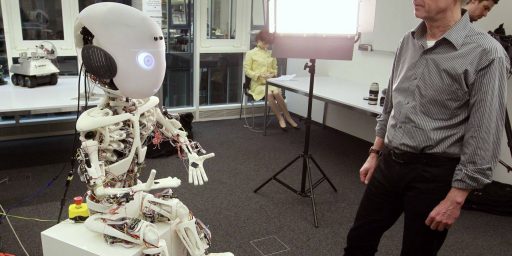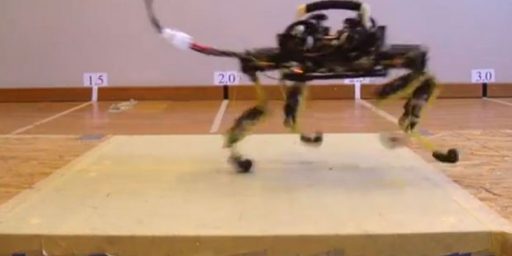John Kerry Video Game
Clive Thompson discusses an interesting phenomenon in computer graphics animation: as images get closer to looking human, they start to look less human.
hen an android, such as R2-D2 or C-3PO, barely looks human, we cut it a lot of slack. It seems cute. We don’t care that it’s only 50 percent humanlike. But when a robot becomes 99 percent lifelike—so close that it’s almost real—we focus on the missing 1 percent. We notice the slightly slack skin, the absence of a truly human glitter in the eyes. The once-cute robot now looks like an animated corpse. Our warm feelings, which had been rising the more vivid the robot became, abruptly plunge downward. Mori called this plunge “the Uncanny Valley,” the paradoxical point at which a simulation of life becomes so good it’s bad.
While initially counterintuitive, this actually makes sense.
Consider Alias, the new title based on the TV show. It’s a reasonably fun action-and-puzzle game, where you maneuver Sydney Bristow through a series of spy missions. But whenever the camera zooms in on her face, you’re staring at a Jennifer Garner death mask. I nearly shrieked out loud at one point. And whenever other characters speak to you—particularly during cut-scenes, those supposedly “cinematic” narrative moments—they’re even more ghastly. Mouths and eyes don’t move in synch. It’s as if all the characters have been shot up with some ungodly amount of Botox and are no longer able to make Earthlike expressions.
Kerry campaign: FYI.






It’s not pimping, ’cause it’s not my blog, but I had to post a link to
this:
This is not unlike the Uncanny Valley
—